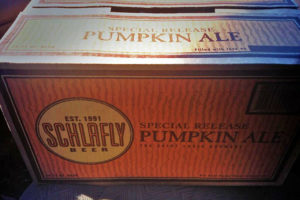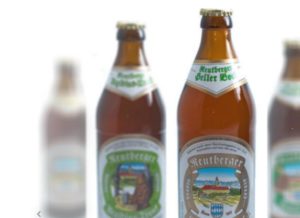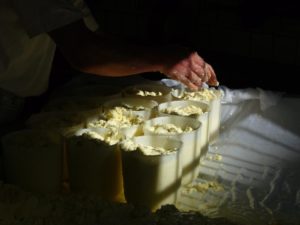
Editor’s Note: This sponsored column is written by Nick Anderson, beermonger at Arrowine (4508 Lee Highway).
We got a beer in at Arrowine last week that we’d never seen before in Virginia: Green Bullet, a “Triple IPA” from Green Flash Brewing Company in San Diego.
I’m normally not a fan of the Triple IPA designation (I think calling something “Double” or “Imperial” IPA is enough warning of its strength — a personal preference, nothing more), but with Green Bullet checking in at 10.1% ABV and 100 IBU, giving folks a head’s up by calling it a Triple IPA is fair.
While I don’t often partake of very strong “hop-bomb” IPAs anymore in my down time, I’m finding myself making an exception with Green Bullet: it uses two New Zealand hop varieties — Pacific Gem and the Green Bullet hop it’s named for — to create a bold, rich hop experience that never goes too far with the bitterness and demonstrates a clean palate of tropical fruits and sharp citrus. There is a grassy, almost minerally characteristic to beers that prominently feature New Zealand hops, and Green Bullet manages to hold on to that despite the ripeness of its fruit notes. If you see it out-and-about and like very hoppy Ales, I definitely recommend it.
Now, while I mentioned we hadn’t seen Green Bullet before in Virginia, that doesn’t mean it is a brand-new beer. Green Bullet was actually first released in 2011, as Green Flash’s ninth anniversary Ale. Green Flash brewmaster Chuck Silva had been exploring New Zealand hops and came upon the still relatively unknown Green Bullet. Silva had been looking to go in a different direction for Green Flash’s ninth anniversary, and New Zealand’s uniquely spicy and floral hops inspired the creation of Green Bullet. Following its initial release, Green Bullet was only made for a handful of special draft-only batches before the Green Flash crew decided to finally make enough of it for a national bottling run.
Like with Green Bullet, occasionally a beer meant for a limited or seasonal run proves popular enough that it becomes a permanent fixture of a brewery’s lineup.
If you look at the packaging for Lagunitas Li’l Sumpin’ Sumpin’, you’ll see it says “Un-Limited Release”; that’s because Sumpin’ Sumpin’ was only intended to be a summer seasonal when it was first released in 2008. Sumpin’ Sumpin’ was a hit immediately after being release; so much so that in 2010 it became part of the Lagunitas year-round line, and is now one of their most well-known and beloved beers.
Stone Ruination IPA is another limited beer that worked its way into the permanent line, though it took some time to get there. For Stone’s second anniversary, they doubled the amount of hops in their flagship IPA; fans enjoyed it so much Stone brought it back for their third and fourth anniversaries as well. On Stone’s fifth anniversary, they decided to go plaid (Spaceballs-style) and doubled the amount of hops used in the Fourth Anniversary Ale. Stone Fifth Anniversary was a sensation, and joined the year-round lineup as Ruination IPA.










